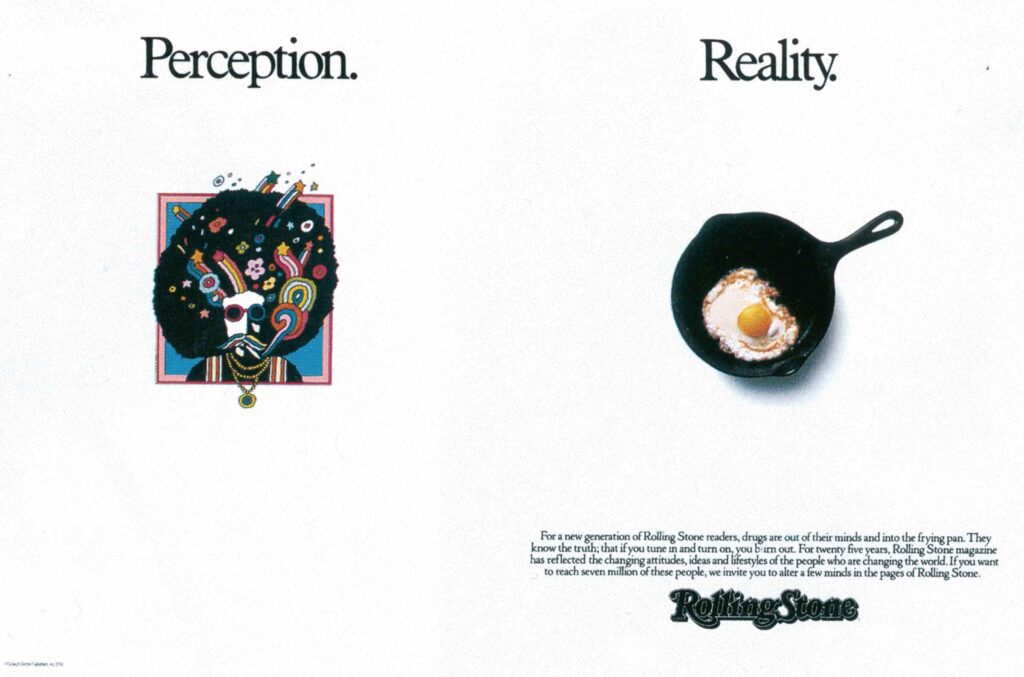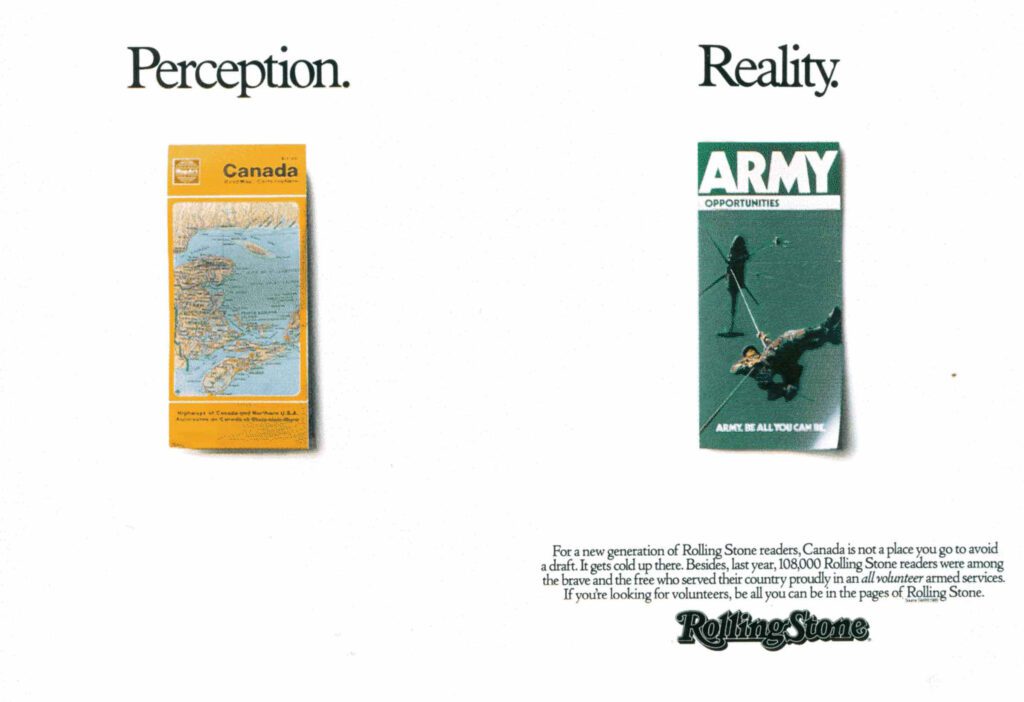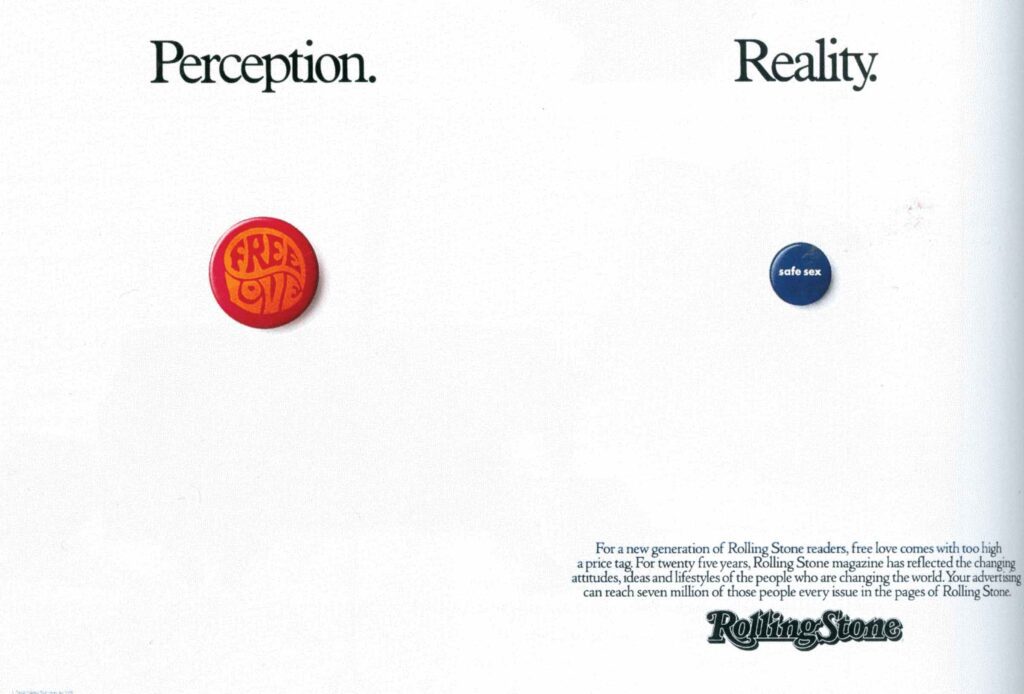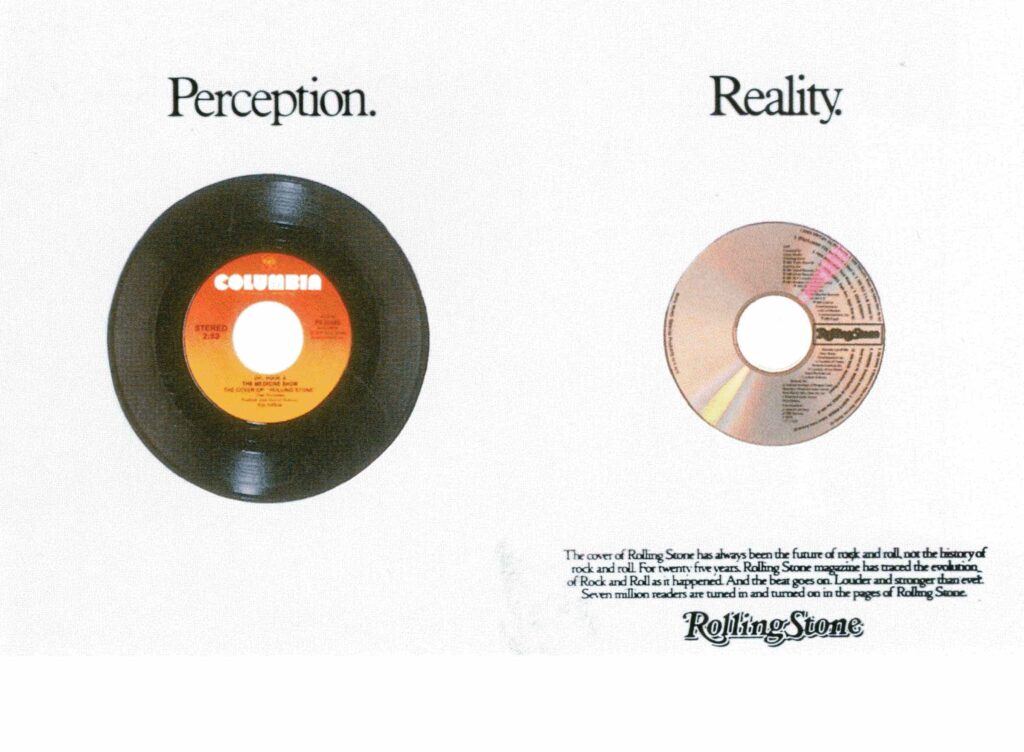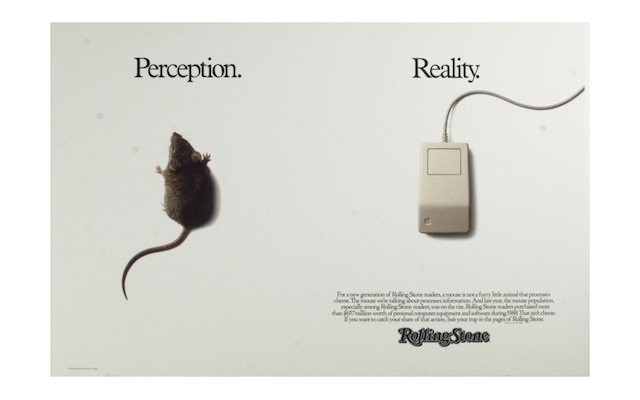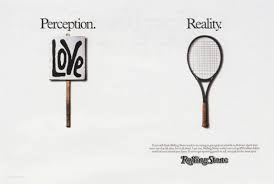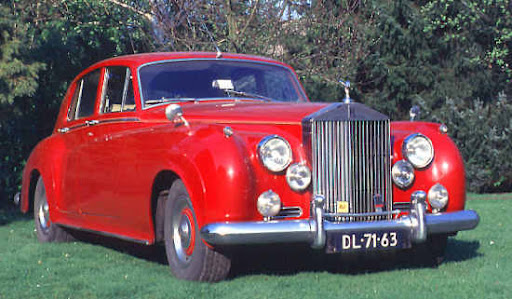Iconic Ads: Rolling Stone – Perception & Reality

Fallon McElligott crafted a campaign which in sense countered the perception with reality of the target audience.
Rolling Stone was started in 1967 by Jann Wenner, who saw that rock and roll was more than just music.
In terms of social views, fashion, politics, and even language, it had a tremendous impact. The music of the counterculture movement in America was rock and roll.
The opportunity smelled good to Wenner, and he ran with it. It is precisely because of this that Rolling Stone was not merely a magazine.
What Wenner created was attention. The attention of white, middle-class college students who obviously enjoyed rock and roll was on Black (R&B) artists like James Brown and The O’Jays. But who were also in favor of “Make love, not war,” rejected Richard Nixon, and preferred the use of marijuana over tobacco, also espoused racial and economic justice, environmentalism, and a variety of left-wing ideas.
Rolling Stone’s audience — and their loyalty — was the real product. Wenner’s objective was to get advertisers to buy it.
Change of Perception
But once the magazine became a mainstream hit, it changed. Including the culture it helped create.
In the 70s, rock & roll fell out of favor. Rock bands once appeared on the cover of the magazine were now replaced by comedians and actors
Then the 80s came. And in 1985, Rolling Stone started having a hard time. Because advertising revenues were ridiculously low. Rolling Stone magazine began having trouble luring companies to buy advertising in its pages because of the perception that its readership was predominantly aging hippies or other cultural dropouts of the 1960s.
Then came Fallon McElligott.
Fallon McElligott realized that the reality was different.
The Idea
They went & met the Rolling Stone team in New York. Pat Fallon, Tom McElligott and others were being briefed by Wenner in his 5th Avenue office. While he was talking, Tom saw Fallon scribble something on his note pad. He had written:
Perception – Reality.
So it was Fallon who actually gave the idea. Tom was blown away and he told the other writer also with them, Bill Miller, that there could be no better line than this.
Then, it was Ben Miller and Houman Pirdavari who gave the ideas for the visuals. Mark Hauser also contributed
The series featured ads using portrait-style photography of 1960’s icons juxtaposed with a corresponding contemporary counterpoint (e.g., a hippie and a businessman, a painted VW van and a sports car).
Aftermath
The number of advertising pages increased during the course of this campaign. This and other campaigns helped establish the sort of advertising in Minneapolis in the 1980s, that relied on great content, superb design, and engaging concepts.
One year later, Rolling Stone’s ad sales were up by about 50 percent.
Reference – https://davedye.com/2017/01/09/vftl-episode-1-tom-mcelligott/
